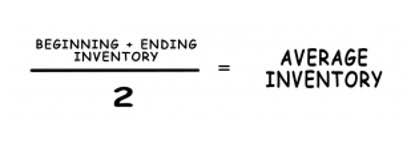
When payment discrepancies exist, you should clearly document any adjustments with specific explanations. This is especially the case for busy team members who have a lot on their plates and are trying to complete the process as quickly as possible. If what is payment reconciliation there is a discrepancy, revisiting the corresponding purchase order or invoice to determine the correct amount will be necessary. Next, initiate payment by writing a check or sending an ePayment (ACH, credit, debit, virtual card, or wire). Learn how you can avoid and overcome the biggest challenges facing CFOs who want to automate.
- Automation ensures meticulous processing of numbers and accurate comparisons, minimising the risk of human errors that often accompany manual reconciliation.
- It helps identify discrepancies, ensures compliance with accounting standards, prevents errors in consolidated financial statements, and provides a clear audit trail for transparency.
- Internal reconciliation primarily deals with the recording of transactions using accounting software, spreadsheets, or receipts.
- Many organizations are already reaping the benefits of AP automation when it comes to payment reconciliation.
- Go through each transaction in the internal records and find the corresponding entry in the bank statements or other external records.
- This may include external documents like bank or credit card statements, as well as internal records like purchase orders, receipts, general ledger data, and expense reports.
Identifying and Resolving Discrepancies
The advent of automation software has made payment reconciliation much easier, faster, and more accurate than ever before. However, certain traditional challenges persist and some new challenges have emerged. Record of payment is made externallyWhen the payment is made, either to or from the business, a record of the payment appears in the business bank account.
The Future of Payments in India: Driving growth through offline payment adoption.
See how forward-thinking finance teams are future-proofing their organizations through AP automation. Once again, this prevents the need to manually move data across applications and platforms. You use payroll reconciliation to match all your payment records to employees with the actual wages due. Go through each discrepancy you find and resolve it by correcting the related records and making any necessary changes to retrieve the funds or identify why they were not received or recorded correctly.
- To do intercompany reconciliation in Excel, create separate sheets for each entity’s transactions.
- You can also opt to maintain the records of your transactions using Excel or Google spreadsheets.
- Use to identify unreconciled or external bank statementlines, and create an account for a transaction.
- Payment reconciliation is a cost-effective way to gain efficiency and improve your operations.
- Download our data sheet to learn how you can run your processes up to 100x faster and with 98% fewer errors.
Ready to Experience the Future of Finance?

To do intercompany reconciliation in Excel, create separate sheets for each entity’s transactions. Use formulas like VLOOKUP or INDEX-MATCH to compare amounts, identify discrepancies, and ensure alignment. Document differences and adjustments, and summarize reconciled figures for reporting.
Accounts payable reconciliation

AP audits can be time-consuming if accounting the payment reconciliation is not done correctly. An audit is often done by a third party or internal team to check a company’s financial statements. A time-consuming audit can mean higher costs for your organization since auditors have to go beyond their budgeted hours.

Accounts Payable Reconciliation
This statement lists every transaction, including the vendor’s payment methods, sales, and income. Internal reconciliation primarily deals with the recording of transactions using accounting software, spreadsheets, or receipts. While this may sound straightforward, manual paperwork carries the risk of human error.
Accelerate the Constituent Experience with Better Time to Value
- Once you complete these integrations, you can quickly perform payment reconciliations without manually entering or transferring data.
- The process can become complex for a government agency with numerous receipts, invoices, statements, and data sources to reconcile.
- The solution should also be flexible so that admin users could easily make changes to the matching and posting rules so that changes can be implemented rapidly to meet your organization’s needs.
- Daily account reconciliation ensures accounts are free from discrepancies, giving you peace of mind.
In fact, you need a clearly defined company expense policy to determine who can pay for what, under which conditions. A great starting point is to learn about which processes can be automated and how to efficiently streamline tasks–you can find everything you need in our AP Survival Guide downloadable eBook. QuickBooks Online lets users import transactions from bank feeds using the Banking tab menu. However, QuickBooks Online support doesn’t guarantee that the bank’s API connection provides all of the payment transactions data via bank feeds to the QuickBooks user.
A single mistake in data entry could have far-reaching consequences, making internal reconciliation a delicate process. While ignoring small discrepancies to save time may be tempting, this practice can lead to more significant issues. Small discrepancies can accumulate over time and may indicate underlying problems in the reconciliation process. Organizations should investigate and resolve all discrepancies, regardless of their size, to maintain the accuracy and integrity of financial records. To reduce the risk of errors and fraud, segment duties related to payment processes.
Payments
As stated earlier, payment reconciliation can help improve the accuracy of your financial records. When you have accurate financial records, financial reporting also becomes more accurate. In addition, automated solutions help reduce the time and effort required to create financial reports, making the process more efficient. Automating payment reconciliation involves using specialised software or systems that match and compare Accounting for Churches financial records automatically. These tools employ algorithms to identify discrepancies and irregularities, reducing the need for manual intervention and ensuring efficient and accurate reconciliation.
